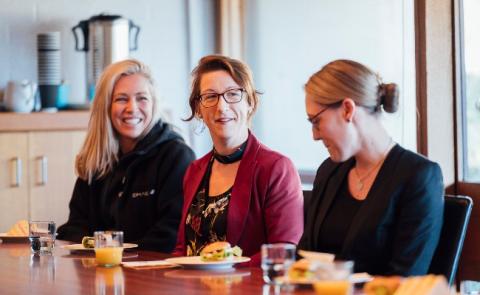Last year, a group of New York teenagers performed an experiment. They wandered around a single block of the Bronx and photographed every sign warning them that they weren’t welcome.
“No loitering”, “no sitting”, “no playing” and “no minors” they were told. One shop refused to serve anyone wearing a hoodie, another cautioned that young people would be asked for ID, while a third proclaimed that groups of four or more people would be dispersed. One takeaway proprietor even placed a 15-minute time limit on teenagers eating chicken wings in the store.
“These signs not only show these business and property owners’ individual attitudes towards teens, they also imply a threat — ‘no loitering or else’,” wrote the six teenagers behind the ‘Yes Loitering’ project.
While Yes Loitering looked at New York through a teenager’s lens, the questions these budding urban planners raised made me wonder how we can create places in Canberra where loitering is OK.
A group of toddlers play, a group of adults catch up, but it seems only teenagers loiter. To loiter is to “to move slowly around or stand in a public place without an obvious reason” – but that is what many of us do when we are whiling away the hours with friends.
Young people use public spaces just as much as anyone else. But too often young people – and 24 per cent of Canberrans are under the age of 19 – aren’t included in the placemaking process, says Nichelle Jackson, an Associate Director with Canberra Town Planning.
Nichelle was raised in Canberra and remembers feeling overwhelmed by a “vast sea” of suburbs stretching out along the spine of the Tuggeranong Parkway, and the inaccessibility of Canberra’s design to car-free teens. “I grew up in Tuggeranong, and none of my friends lived nearby so more often than not I got the bus, rode my bike or walked the long way home,” she says.
After a few years studying architecture and property valuation in Sydney, Nichelle returned to Canberra. Since then, she’s carved out a reputation as a thoughtful and creative town planner.
“Having grown up here I’ve seen Canberra change a lot in my life,” Nichelle says. “And I’m excited about Canberra’s future. I want to be part of it, as I feel like I appreciate the context of this change.”
Nichelle remembers what it’s like to be a teenager at a loose end in Canberra, and says it’s not enough to invite young people to take part in community consultation which either doesn’t welcome them, or which ignores their ideas.
“The formal part of the discussion is owned by older generations in Canberra – but it’s not that young people aren’t interested. They just engage in different ways. A young person won’t write a four-page letter to the newspaper, which means their voices are often missing from the discussions about Canberra’s future.”
“We all need to work better on tools and methods to reach younger demographics,” she adds, pointing to a host of ideas, from pop up shops and flash mobs to Snapchat strategies.
Nichelle spends a lot of time on community consultation and has listened to young people share their vision for their city. “I think they want a city that is convenient to get around and offers a great lifestyle for them,” she says.
But those lifestyle aspirations are very different to what we grew up with. The average teenager now clocks up 1,200 a year on social media, according to a new report from the Australian Psychological Society. Why play chess in Garema Place when you can play Fortnite at home? Why catch up with friends in Commonwealth Park when you can tweet and text instead? These are the obstacles that city-shapers are up against, Nichelle adds.
“Parks and playgrounds are designed with small children and their parents in mind. But what about teenagers?” Nichelle asks.
With nothing to do, teenagers hang out in bus interchanges, shopping centres and the ubiquitous skate park – the default response from developers attempting to accommodate teenagers, despite just a quarter of children and teens actually participating in the activity.
So, what sort of space does encourage loitering?
Free Wifi is a given, but others include power points so that teens can charge their phones and play music, café-style seating or raised grass that encourages small groups to gather, outdoor cinemas and performance stages, chalkboards that spark artistic expression, mirrors for dance practice and outdoor gym equipment.
“One thing that I keep in mind when I read the reams of objections to any new project is that sometimes some people are defending old, inefficient tired developments which no longer serve their purpose. It’s important to understand and respect these views but to also bring a diversity of voices into the discussion.
Engaging with a broad range of people about Canberra’s future can help us create a better, more inclusive city with buildings that do serve their purpose. But to do that, we need to start asking young people what they think.”
This article first appeared in HerCanberra: https://hercanberra.com.au/cpcity/why-we-need-to-say-yes-to-loitering/
